Neuronal correlates of the set-size effect in monkey lateral intraparietal area
- PMID: 18656991
- PMCID: PMC2443194
- DOI: 10.1371/journal.pbio.0060158
Neuronal correlates of the set-size effect in monkey lateral intraparietal area
Abstract
It has long been known that the brain is limited in the amount of sensory information that it can process at any given time. A well-known form of capacity limitation in vision is the set-size effect, whereby the time needed to find a target increases in the presence of distractors. The set-size effect implies that inputs from multiple objects interfere with each other, but the loci and mechanisms of this interference are unknown. Here we show that the set-size effect has a neural correlate in competitive visuo-visual interactions in the lateral intraparietal area, an area related to spatial attention and eye movements. Monkeys performed a covert visual search task in which they discriminated the orientation of a visual target surrounded by distractors. Neurons encoded target location, but responses associated with both target and distractors declined as a function of distractor number (set size). Firing rates associated with the target in the receptive field correlated with reaction time both within and across set sizes. The findings suggest that competitive visuo-visual interactions in areas related to spatial attention contribute to capacity limitations in visual searches.
Conflict of interest statement
Figures


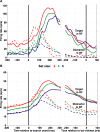
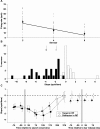

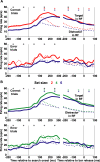
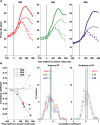


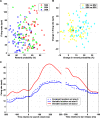
References
-
- Pelli DG, Palomares M, Majaj NJ. Crowding is unlike ordinary masking: distinguishing feature integration from detection. J Vis. 2004;4:1136–1169. - PubMed
-
- Parkes L, Lund J, Angelucci A, Solomon JA, Morgan M. Compulsory averaging of crowded orientation signals in human vision. Nat Neurosci. 2001;4:739–744. - PubMed
-
- Wolfe JM. Guided Search 2.0: a revised model of visual search. Psychon Bull Rev. 1994;1:202–238. - PubMed
-
- Wolfe JM, O'Neill P, Bennett SC. Why are there eccentricity effects in visual search? Visual and attentional hypotheses. Percept Psychophys. 1998;60:140–156. - PubMed
Publication types
MeSH terms
Grants and funding
LinkOut - more resources
Full Text Sources

